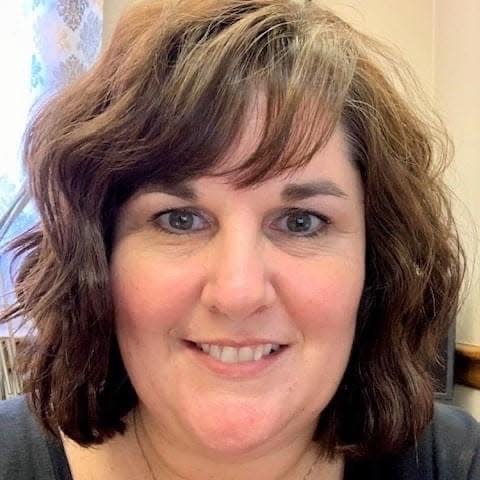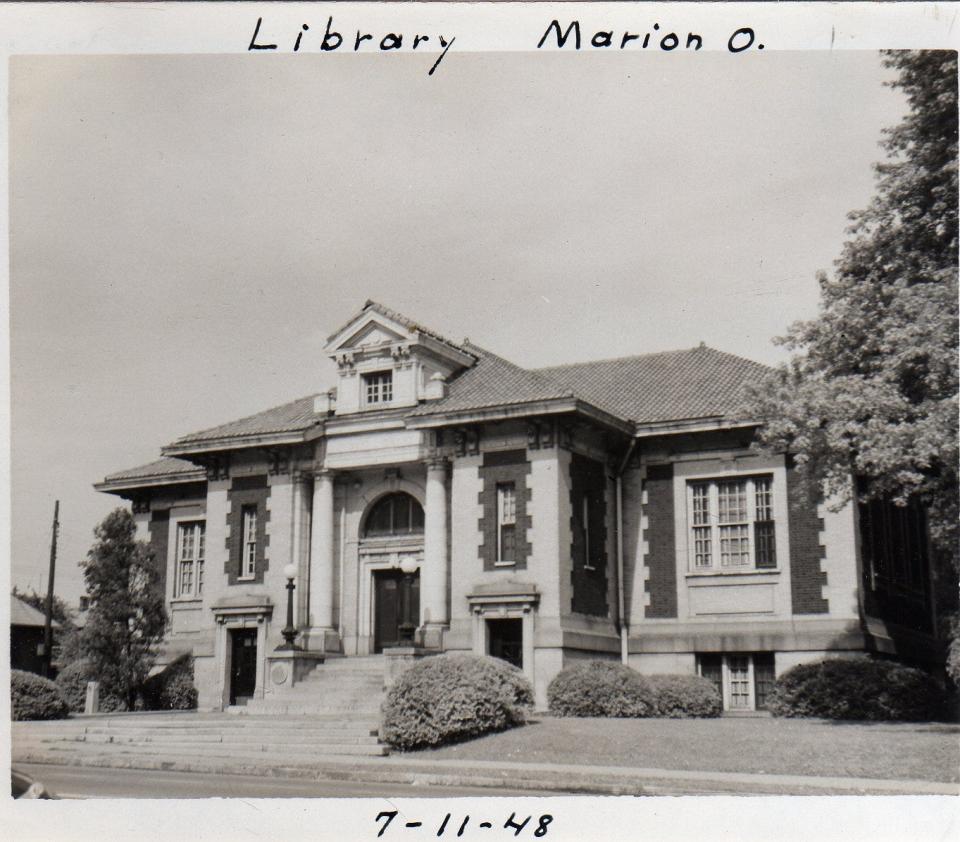Brandi Wilson: Remembering Marion's first public library
- Oops!Something went wrong.Please try again later.

When I take a "Sunday" drive and travel along the back roads, I often wonder what the people do for a living and where they shop or dine. I am the same way when I explore my hometown of Marion, Ohio. Why was a building designed a certain way? What was it before it was what it is today? Recently Randy Winland shared with me history on a building that I always thought was unique. I hope you enjoy the story behind our first public library.
Edward Huber and Andrew Carnegie had more in common than their roles as industrial leaders. Huber, who helped establish companies such as Huber Manufacturing and the Marion Steam Shovel Company, was instrumental in creating the first public library in Marion. Carnegie, a manufacturing and steel magnate, provided construction funding for more than 2,500 libraries worldwide, including over 1,600 in the United States with 113 in Ohio.
Edward Huber believed that providing access to books that could be borrowed rather than purchased would be an important step in elevating the knowledge and morals of the "workingmen" in Marion. With the assistance of John J. Crawley, his private secretary, Huber developed and financed the Mechanics' Library Association in the mid-1880s. Crawley, who had first suggested the concept to Mr. Huber, traveled the streets of Marion with a wheelbarrow, collecting books donated by the townspeople. Several other business leaders joined the project and provided funding for the purchase of additional books. Guidelines for the library, which was governed by a board of trustees, were developed. Payment of a membership fee of $1, which equated to approximately a half day's wages for many of the industry employees, was required to be eligible to borrow books. More than 600 men joined within the first few years. Space for the Mechanic's Library and Reading Room was rented on the second floor of the Marion National Bank building on East Center Street. In 1891, the library trustees voted to ask the city of Marion to take control and convert the facility to a true public library. The city council agreed and a levy was passed for the library's operation.
In December of 1902, Andrew Carnegie offered a $25,000 donation to the city of Marion to build a library. As part of the conditions for receiving the donation, the city council would be required to furnish the site, provide 10% of the donation amount each year for the operation of the facility using public funds, and provide free service for all. While Carnegie's offer was very attractive to many, others were not as receptive. Among the concerns was that the money could be better used to build a less expensive structure while providing more funding for stocking the shelves and that guaranteeing the operating costs could be problematic as levies were oftentimes difficult to pass.

After considerable public debate over the course of more than two years, the decision was eventually made to proceed with accepting Carnegie's offer. The Sawyer Sanatorium gardens on South Main Street across from the sanatorium (now commonly known as the Elite Apartments building) were purchased in 1905 from Dr. C.E. Sawyer for $7,500. Representatives from Marion traveled to New York City to seek additional funding which was granted with the pledge increased to $30,000. The library trustees researched the architectural style and operational procedures of numerous libraries to ensure that Marion's would be a state-of-the-art facility. Architect George Bulford of Columbus was awarded the design contract with work commencing in November of 1906. By June of 1908, the imposing red brick and stone structure was completed and open for visitors. More than 5,000 books were available for readers as well as several periodicals. In a departure from the practice of many other libraries, the trustees voted to name the facility the "Marion Public Library" instead of the "Carnegie Library." A plaque reading "Presented to the city of Marion by Andrew Carnegie," along with the trustees' names, was mounted inside the entrance.
For more than 70 years, Andrew Carnegie's gift to Marion opened its doors to thousands of children and adults who spent countless hours searching through the shelves for just the right book for education or enjoyment. With the opening of a new public library in 1979, the South Main building became the educational center for Trinity Baptist Church after a proposal by the Marion County Historical Society to convert it to a historical library museum was rejected by the library trustees. In 2019, the building began another new life as the Explore-It-Torium Children's Museum. What began as a gift by Edward Huber and Andrew Carnegie now serves as a source of dreams and adventure for the children of Marion.
To learn more about the history of Marion County, Ohio. Stop by Heritage Hall, Wednesday-Sunday, from 1 p.m. – 4 p.m., and take a tour.
Brandi Wilson is the director of the Marion County Historical Society. She can be reached at 740-387-4255 or mchs@marionhistory.com.
This article originally appeared on Marion Star: Brandi Wilson: A history lesson on Marion's first public library

